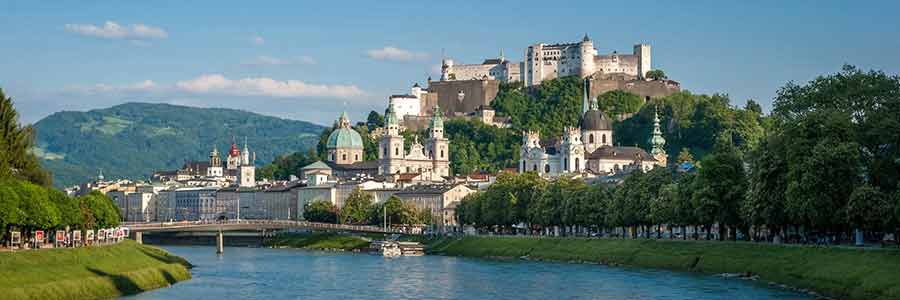Mozart Weeks, Easter Festival, Whitsun Festival & Baroque
 In the La Tene period Salzburg was an administrative center of the Celtic kingdom of Noricum. After the Roman invasion 15th AD, the population of the city on the hills was due to the city planning of the Roman moved into the area of todays´s old town. Since Emperor Claudius, the new city, as Municipium Claudium Iuvavum, was one of the main cities of the Roman province of Noricum. After giving up the province Noricum 488 AD, at the beginning of the mass migration, a part of Romano-Celtic population remained in the country. In the 6th century, the conquest was followed by the Bavarians. Bishop Rupert got the remains of the Roman city as a present from Duke Theodoas of Bavaria around 696 AD to evangelize the country in the east and southeast.
In the La Tene period Salzburg was an administrative center of the Celtic kingdom of Noricum. After the Roman invasion 15th AD, the population of the city on the hills was due to the city planning of the Roman moved into the area of todays´s old town. Since Emperor Claudius, the new city, as Municipium Claudium Iuvavum, was one of the main cities of the Roman province of Noricum. After giving up the province Noricum 488 AD, at the beginning of the mass migration, a part of Romano-Celtic population remained in the country. In the 6th century, the conquest was followed by the Bavarians. Bishop Rupert got the remains of the Roman city as a present from Duke Theodoas of Bavaria around 696 AD to evangelize the country in the east and southeast.
The city is characterized by the city mountains, the Salzach river that flows through the city area and the Hohensalzburg Fortress, which is visible from afar.
The festival has an annual economic benefit of around 276 million euros and an employment effect of around 5,000 jobs (around 220 employees on an annual average). In addition to the festivals, Mozart Weeks, Easter Festivals, Whitsun & Baroque Festivals and the Salzburg Advent Singing contribute to Salzburg's attractiveness. In addition, visitor magnets such as the Hohensalzburg Fortress (around 1.14 million visitors), Mozart's birthplace and home and Hellbrunn Palace ensure excellent results. The trade fair and congress sector is also important for tourism in the city of Salzburg; it leads to improved utilization of accommodation capacities outside of the main season.
Es gibt keine Beiträge in dieser Kategorie. Wenn Unterkategorien angezeigt werden, können diese aber Beiträge enthalten.